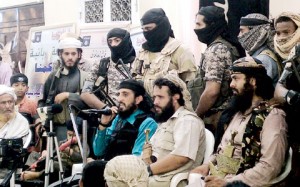
Recent weeks have seen a heating up of the fight against cells of al-Qaeda in the Arabian Peninsula (AQAP) operating in the southern provinces of Yemen. During the unrest that began in the 2011 uprising, the Islamists succeeded in making considerable gains both on the battlefield against the lackluster troops of the military and in captured territory that was to form the new Arabian caliphate. However in the past month, the administration of President Abd Rabbo Mansour Hadi appears to have turned the tide, inflicting heavy casualties on the militants and retaking lost territory as was seen the battle for Lawder that left over 200 militants dead from the fighting.
These victories can be chalked up to a combination of renewed determination on the part of the government, partial resolution of internal political spats with remnants of the former regime, increased military involvement of the United States, and perhaps most interestingly a stepping up of the local tribes in the south who have been deeply affected by the fighting.
What can possibly be inferred from the numerous cases where tribesmen have picked up arms against the militants is that AQAP has perhaps pushed too far. As in any form of insurgency, the Islamists are dependent on a modicum of public support in order to survive. This can be for either logistical, recruiting or a host of other basic needs if the organization hopes to continue their activities against the government. Their killing of local leaders who have openly criticized them was possibly the line that was crossed, can be clearly viewed as a strategic error for which they must now compensate for.
To that end, the recent release of 73 captured Yemeni soldiers on April 29 supposedly out of respect for the tribal leaders involved in the negotiations can be taken as an attempt to placate the residents of the south and adjust their image to the public. The men have made a point of vocalizing the decent treatment that they received at the hands of their captors. Freeing the soldiers, especially in such numbers is atypical of the militants who have built a reputation for their ferocity. Ansar al-Sharia, the largest AQAP affiliate has been reported to have executed hundreds of captured military personnel, leaving their decapitated bodies strewn around the south. It should not be forgotten that just days before the men were allowed to return home, the militants had threatened to kill ten a day until their demands were met. At this point, it is too early to determine the genuine reasons behind the release.
As the Islamists find themselves becoming increasingly unpopular, the question remains as to whether damage control is still an option. The people of the south have grown weary of the conflict and yearn for a return to normalcy. If given the choice between the radical remnants of AQAP or that of the government promising them reforms, then it is fair to assess that the people will continue to side with the government in the push against the militants. This is not to say that the Islamists are on their last legs. Yemen is likely to see months of hard fighting, and the survival of an active militant movement for the years to come. However for now, it would seem that a shift has occurred that many hope will lead the country back to the path of stability and recovery.
To receive reporting and analysis on militancy in Yemen’s south, click here.